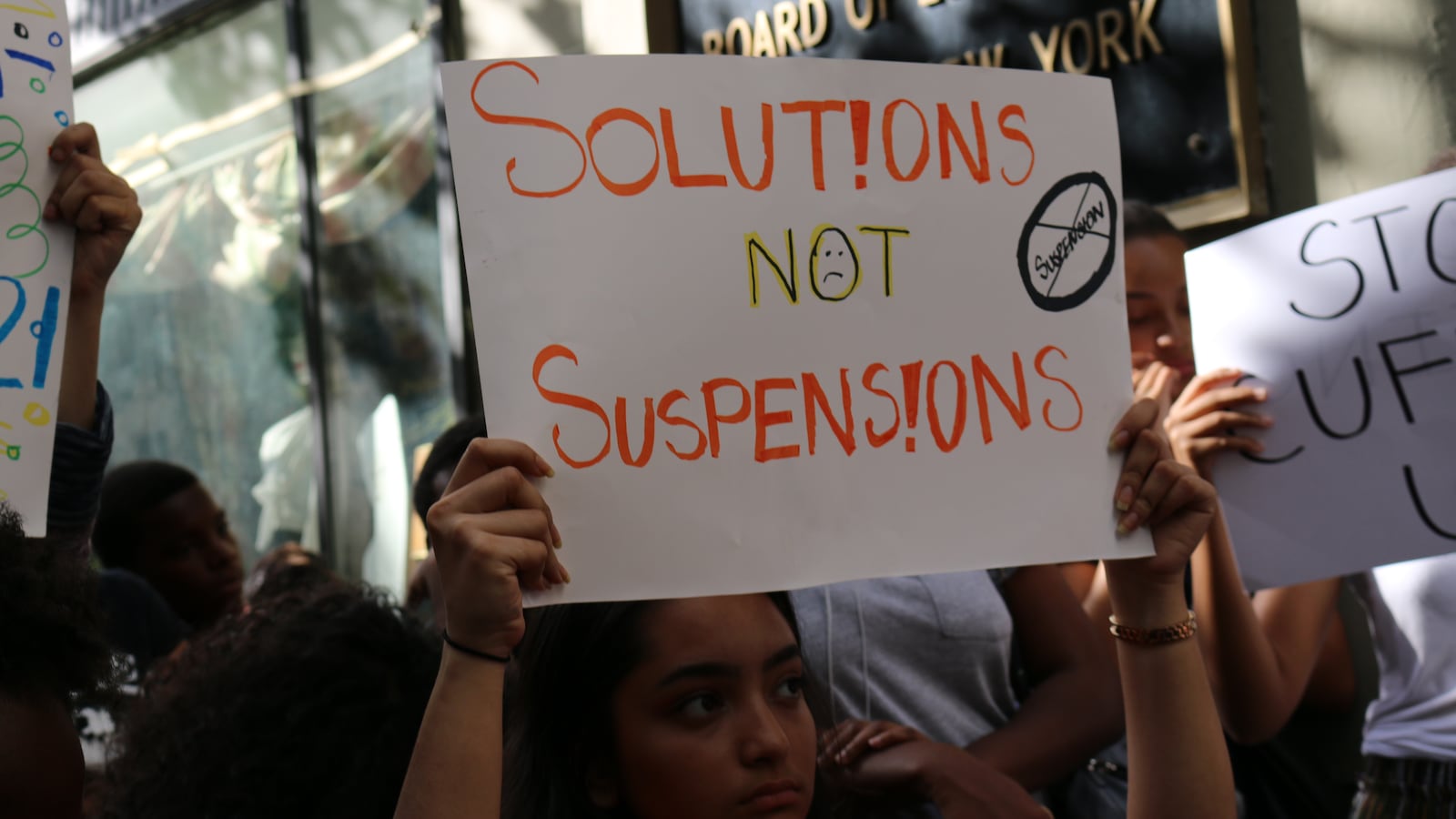Suspensions in New York City schools are continuing to fall, though not as sharply as in previous years, according to new data released Friday.
From September through mid-March, schools issued nearly 7.5 percent fewer overall suspensions compared with the same period in 2015. Principal suspensions, which are handed out for less serious offenses, dropped to 16,059 so far this school year, a six percent drop. More serious superintendent suspensions dropped 11 percent to nearly 5,900.
Mayor Bill de Blasio has championed policies that make issuing suspensions more difficult, including a new discipline code that requires written approval from the education department to suspend students for certain infractions. The city has also invested in training staff members to provide alternatives to suspensions.
“We are encouraged by the steady decline in suspensions and incidents across the city,” schools Chancellor Carmen Fariña said in a statement. She added the city is “providing targeted supports to schools that have historically high suspension rates to implement proactive and effective interventions to keep students in the classroom where they can learn.”
Overall, between 2013-14 and 2015-16 suspensions have plummeted by 30 percent.
But the city’s new discipline policies have drawn criticism. Some union officials and educators have complained that limiting schools’ ability to suspend students without proper training in alternative approaches has made schools more chaotic and dangerous, an assertion that is at least partially backed by student and teacher surveys.
City officials point out that reports of serious crimes in city schools are at “an all-time low” and that arrests and summonses have fallen as well.
The education department addressed another longstanding criticism from advocates: That school-based arrests, summonses, and suspensions disproportionately affect black and brown students, as well as those with disabilities. Officials noted that suspensions for insubordination — which is often viewed as a subjective offense that invites bias — decreased 32 percent to 340 suspensions from last July through December, compared with the same period in 2015.
Though the new data do not include student demographics, the most recent reports that include racial data show that black students represent half of all suspensions, despite being 27 percent of the student population.
Suspensions for students in grades K-2, which the city plans to significantly curtail in forthcoming updates to the discipline code, fell 38 percent.
“We are encouraged by the decrease in suspensions for students in grades K-2 and for insubordination, and also acknowledge that racial disparities in suspensions persist,” education officials wrote in a press release. Whether those disparities are shrinking won’t become clear until the city releases complete demographic data in October.
“Although the city has seen a positive drop in the numbers of suspensions, we still have far to go,” said Dawn Yuster, the school justice project director at Advocates for Children, who added that her organization receives hundreds of calls each year from students facing suspensions, and that most are black or have disabilities.
Yuster criticized the city’s commitment to school discipline reform in the long term. “The city’s preliminary budget does not contain the funding that is needed to maintain the gains from earlier investments in school discipline reform and support schools that are looking to move away from exclusionary discipline practices.”
The education department also reported that students were taken away by emergency medical personnel due to an emotional or psychological condition 484 times from last July through December, down 20 percent compared with the same period the previous year — the first time the statistics were reported. City officials said the decrease is evidence that de-escalation trainings are having an effect.
Advocates have repeatedly criticized the practice of calling 911 to handle disorderly students, and a 2014 settlement barred schools from making 911 calls before trying to defuse the situations themselves.
Overall, the number of times students were transported from schools by EMS for any reason went virtually unchanged at about 4,300.

